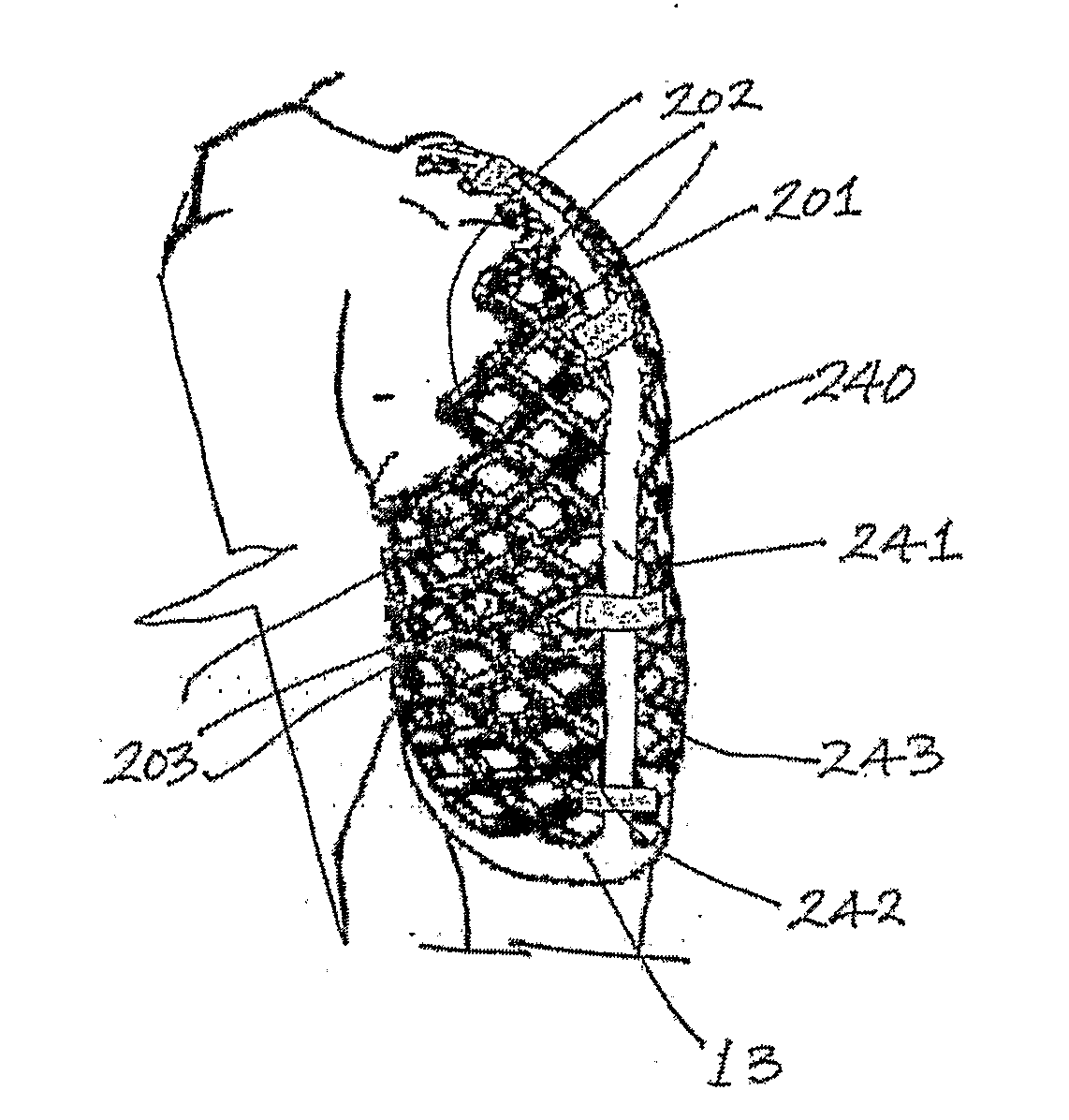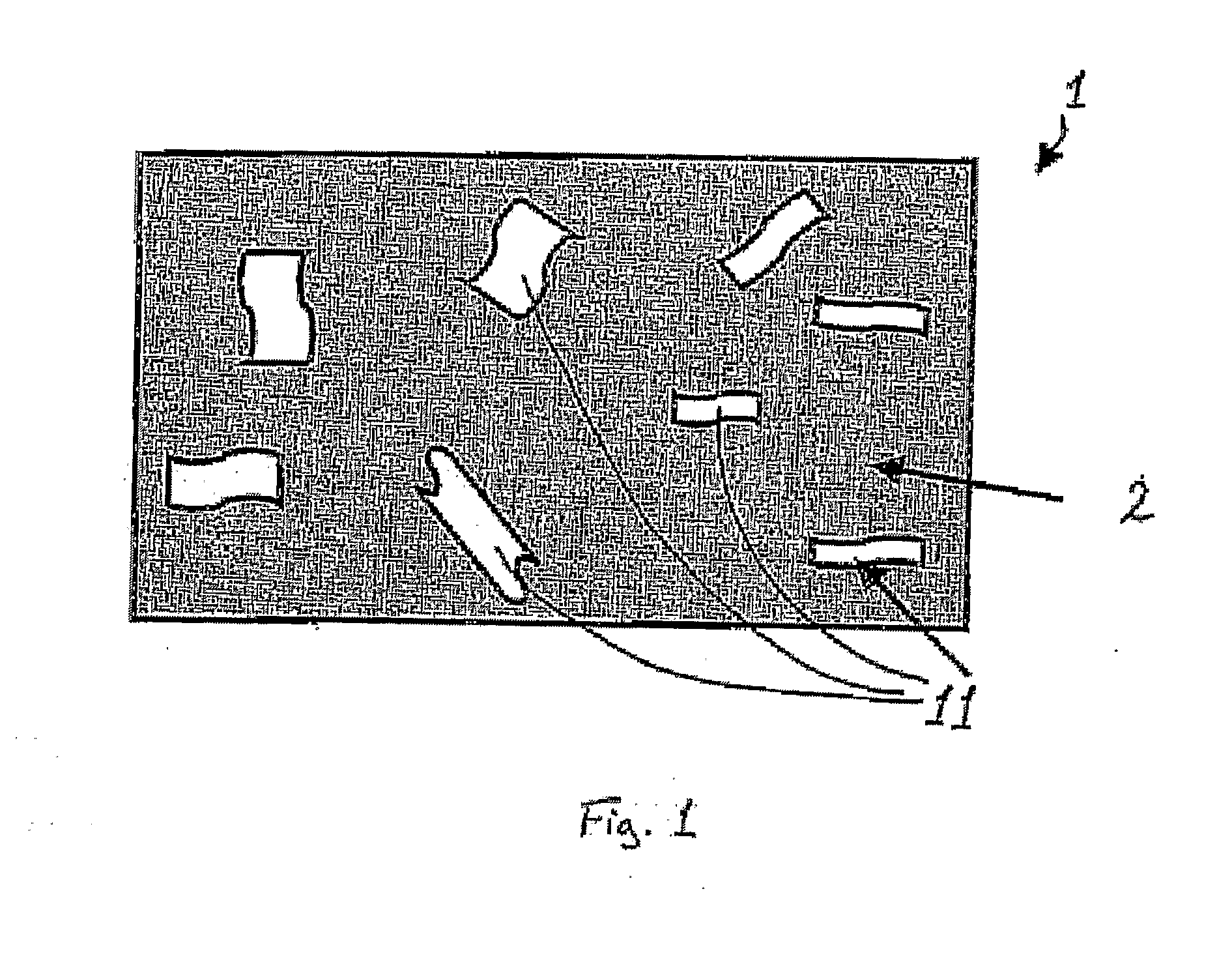Geometrically Apertured Protective and/or Splint Device Comprising a Re-Mouldable Thermoplastic Material
- Summary
- Abstract
- Description
- Claims
- Application Information
AI Technical Summary
Benefits of technology
Problems solved by technology
Method used
Image
Examples
examples
Strength To Openness Ratio
[0377]Three alternative mouldable splint / cast materials (Plaster of Paris, Synthetic and Thermoplastic Mouldable Splints) were selected, examined and rated against the splint device of the invention.
[0378]Two test methods were developed to enable alternative mouldable splint / cast materials to be rated against the splint device of the invention.
[0379]The first test used was a 3 point flexural bending test method which was useful to establish the anisotropic flexural strength characteristics in different axes of the splint / cast materials tested.
[0380]A Unidirectional Bending Test Method was used to determine the average flexural strength characteristics of the alternative materials and the splint device in all axes simultaneously. The Unidirectional test method proved useful for testing devices with different geometrical apertures in order to give a single S:O index that covered the flexural strength characteristics in all axes of each device.
Three Point Flex...
PUM
 Login to View More
Login to View More Abstract
Description
Claims
Application Information
 Login to View More
Login to View More - R&D
- Intellectual Property
- Life Sciences
- Materials
- Tech Scout
- Unparalleled Data Quality
- Higher Quality Content
- 60% Fewer Hallucinations
Browse by: Latest US Patents, China's latest patents, Technical Efficacy Thesaurus, Application Domain, Technology Topic, Popular Technical Reports.
© 2025 PatSnap. All rights reserved.Legal|Privacy policy|Modern Slavery Act Transparency Statement|Sitemap|About US| Contact US: help@patsnap.com



